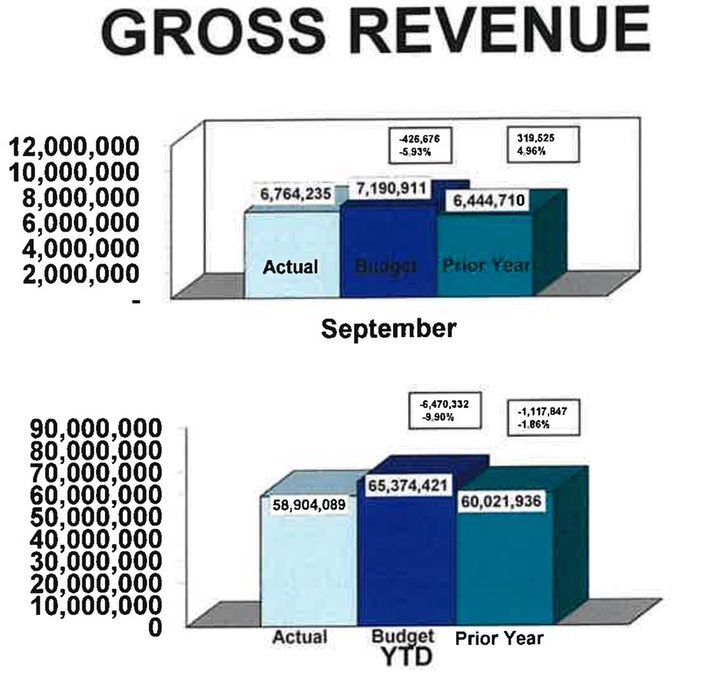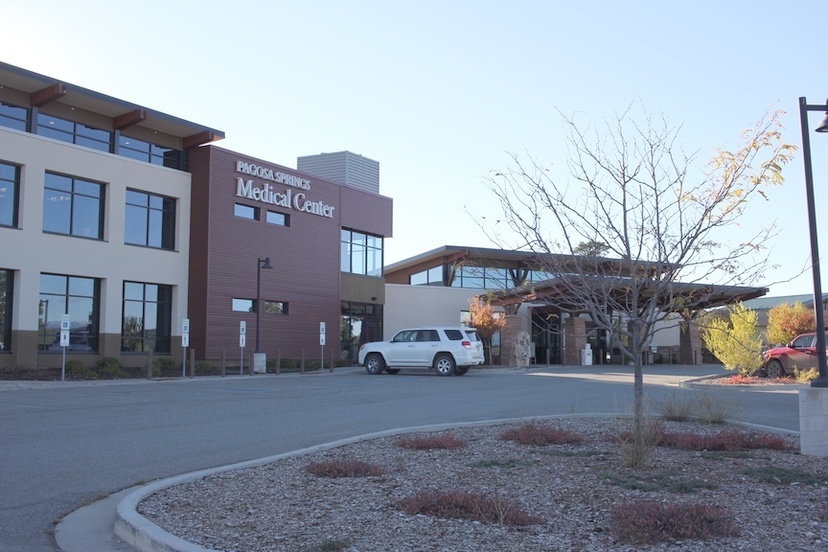When I took a chemistry class during my junior year at Oakland High School, Mr. Peterson introduced us to a mathematical concept I’d never considered before.
Significant digits.
He explained that the measuring tools available in a high school chemistry lab — scales for weighing, graduated beakers and cylinders, thermometers, timers — were accurate only up to a certain margin of error (which could be compounded, of course, by human error.) If we were measuring an amount of liquid — say, 1 liter — we could express how accurate we thought the measurement was using “significant digits”.
We could write, fore example, “1.1 liters” to mean we were confident of the measurement down to a tenth of a liter. The number then has two significant digits.
If were were more certain of the measurement, we could add more decimal points. “1.095 liters” meant that we were sure of our measurement down to the “milliliter” level. In this new example, our measurement has four a significant digits, expressing our increased level of confidence.
But if we combined “1.095 liters” of Liquid A, with “1.2 liters” of liquid B, the result could not be written as “2.295 liters” because our measurement of Liquid B had only two significant digits. (Our lab partner hadn’t been as careful measuring Liquid B.) So the most accurate we can be with the combined liquid would be “2.3 liters”, rounding the total to two significant digits.
The least accurate measurement defines the accuracy of the total measurement. The same rule applies when multiplying. If you multiply “1.5583” by “1.7” using a pocket calculator, the answer is 2.64911. But in science, the answer should not have more significant digits than the least accurate number. So the “real” answer is 2.6, because one of the factors — “1.7” — had only two significant digits.
At least, that’s what Mr. Peterson taught us, as I recall the lesson. This was a while back.
I don’t recall much else from that chemistry class, but the basic idea of “significant digits” has stuck with me all these years. How can we be as honest as possible with the numbers we share with one another?
I’m thinking about “accuracy” and “inaccuracy” lately, because this is the time of year when most of our local government agencies approve their budgets for next year. I currently serve as a volunteer on the Pagosa Area Water and Sanitation District (PAWSD) board of directors, and we will be approving our 2025 budget within the next couple of weeks.
Budgets are full of financial numbers, and some of them are predictable, and we might say they consist of “significant digits”. But other numbers in a budget are nothing more than well-considered guesses. Sometimes, wild guesses.
I attended a meeting, yesterday evening, of the Upper San Juan Health Services District (USJHSD) board of directors. This is the tax-supported government organization that operates the Pagosa Springs Medical Center and our EMS ambulance service.
I wrote about the Pagosa Springs Medical Center (PSMC) rather extensively 15 years ago, when some local movers and shakers were trying to convince the community that we not only deserved a real hospital here, but that we could afford one. (Keeping a hospital staffed was not so much an issue back then, the way it is now.)
When presented with the idea a tax-supported, $12 million, 11-bed hospital, the Archuleta County voters weighed in with a resounding “Yes”. I was one of very few community members questioning the idea. I’m happy to say, the project has turned out much better than I expected. But there were growing pains… and still are.
My impetus for attending the PSMC board meeting was a series of items on the agenda.
5) DECISION AGENDA
- Presentation of the 2025 budget by CFO Chelle Keplinger
- Consideration of Resolution 2024-10 to adopt the budget for 2025
- Consideration of Resolution 2024-11 to set mill levies
- Consideration of Resolution 2024-12 to appropriate sums of money
Last night, CFO Chelle Keplinger did indeed give a budget presentation prior to the vote on the budget.
A few facts from that presentation:

Besides “facts”, the presentation also involved “guesswork”.
PSMC receives about $2,2 million per year from the district’s taxpayers. I’m giving that number two significant digits. In the PSMC 2005 budget document, the number appears to have seven significant digits: $2,241,009. That number is calculated from the total value of properties within the district, paying the tax rate recently set by the Colorado legislature. It might be accurate down to “hundred’s place” but I doubt it’s accurate down to the very dollar. My guess is, only the first four digits are significant.
Most of PSMC’s revenues come from patient services. Looking at the graph above, PSMC had taken in $60,021,936 by the end of September 2023 (the dark turquoise bar.) We assume that’s a very accurate number, because it has already happened, and because PSMC has good bookkeeping processes in place. So, eight significant digits.
Last year, when PSMC wrote their budget for 2024, they predicted an increase over 2023, resulting in $65,374,421 in Gross Revenues by the end of September. This was a calculated number that appears to have eight significant digits. But actually, none of the digits are significant. This was a calculated guess.
As shown above, PSMC does have the real number for Gross Revenue through the end of September: $58,904,089. The 2024 budget estimate was almost 10% higher than the actual collections, through September. Almost $6.5 million too high.
If my household budget were wrong by $6.5 million, I’d be in real trouble. But governments expect this type of inaccuracy.
It’s traditional, when writing a government budget, for finance officers and their staff to calculate next year’s income and expenses down to the exact dollar, even though they know that their estimate will often be wide of the mark.
For example. If PSMC had put the simple number “$60,000,000” in their 2024 budget (through September) instead of “$65,374,421″… they would have been closer to the correct figure. But they had no way of knowing that.
I’m not casting any blame on PSMC for being “traditional” with their budget, and I’m definitely not suggesting that anything ‘dishonest’ is going on.
I’m just thinking about Mr. Peterson, and wondering what he would say about all this.

